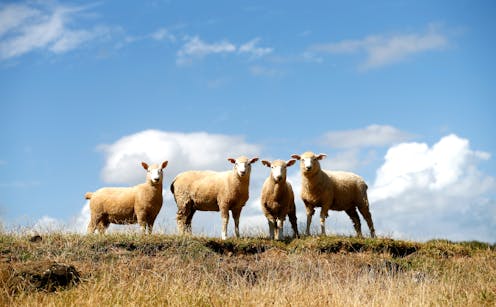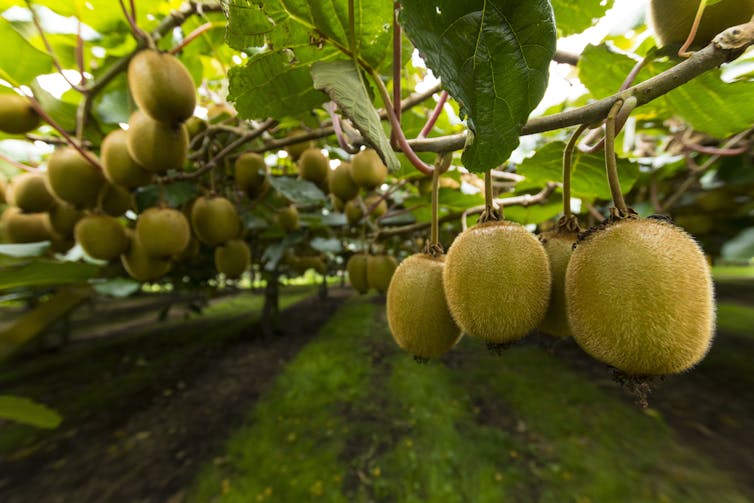
This week’s major report on climate impacts, adaptation and vulnerability highlights the challenges a shifting climate presents for food- and fibre-producing regions, including Aotearoa New Zealand and Australia.
A chapter of the Intergovernmental Panel on Climate Change (IPCC) report evaluates key evidence from Australasia. It shows we are already observing tangible changes in our climate, even at the current 1.1℃ of warming above pre-industrial temperatures. With economies in both countries based on the primary sector, this is a cause for concern.
Climate impacts of particular relevance to the primary sector include increased frequency and intensity of droughts and changes to the seasonality of pasture growth and winter chilling in horticulture. Growing evidence shows these impacts would not be happening in a world without climate change.
These changes will intensify in the future as the planet warms. How much will depend on how successful global and domestic efforts are to reduce greenhouse gases.
The north and east of New Zealand is expected to become drier, and the west and south wetter, with considerable seasonal variation. Extreme events are expected to become more frequent. Droughts will be more frequent and last longer, rainfall will be more intense.
The number of days with temperatures above 25℃ is likely to increase considerably, while we can expect fewer frost days. Hot days cause heat stress in livestock and affect the quality of wine grapes, while fewer frost days can affect crops such as kiwifruit, which need winter chilling for both yield and quality.

All of these changes will have implications for our primary sector. It has developed around a relatively stable climate, with has allowed regional specialisation such as Sauvignon Blanc production in Marlborough, kiwifruit in the Bay of Plenty and dairy in the Waikato.
Current efforts to prepare for impacts will reach limits
Opportunities may present as well, although we need to be careful and examine the full picture. While modelling studies suggest higher levels of carbon dioxide will boost pasture and tree growth, they do not incorporate changes in extreme events, such as drought or wind damage to trees, which counter those benefits.
Farmers and growers are already adapting to the impacts they experience now. As experts in their systems, they have the knowledge and experience to make changes to their farm management, timing of sowing and harvesting or perhaps experimenting with different crops.
Read more: Plants are flowering a month earlier – here's what it could mean for pollinating insects
But as global temperatures continue to rise and the impacts in Aotearoa intensify, these types of adaptations will become less effective. More transformative change may be necessary to maintain the viability of our primary sector.
This could include diversification of production, perhaps incorporating different crops or trees into an existing system, or more widespread land-use change. If planned carefully and for the long term, this could present an opportunity to address other challenges the primary sector faces, including the need to reduce greenhouse gas emissions, improve water quality and enhance biodiversity.
People will experience climate change differently
Farmers and growers are all different and have different circumstances that influence how they experience climate change and how well they can adapt. Many have high levels of debt that make further investment or borrowing challenging. Others may be constrained by decisions they have made in the past that lock them into the system they are currently in.
Almost all of them face increasing regulatory requirements that may also limit their ability to implement adaptations to climate change, particularly over the longer term. This might be due to limited financial resources, or lack of knowledge and skills to make changes on different fronts.
However, it is essential any changes and adaptations undertaken now consider the long term. Otherwise we run the risk of “maladaptation” or adjustments that may be effective only on a small scale or short term, with negative or unintended consequences in other areas or into the future.
For example, irrigation can be maladaptive if it results in an associated increase in fertiliser use which in turn adds greenhouse gas emissions and reduces water quality. It can also lead to the loss of places of cultural, social and spiritual significance. And investment in irrigation can lock farmers into systems they are then unable to change.
Nature and land have the potential to support adaptation
The report also emphasises the critical role ecosystems and nature-based adaptation can play.
Land has potential to support adaptation beyond the primary productive sector. For example, using the natural environment as a buffer to avoid flooding from heavy rainfall would have a wider range of benefits than more “hard” engineered solutions. This could be in the form of wetlands or restoring river flood plains instead of constructing stop banks or sea walls which only transfer the problem elsewhere and lead to a potentially misguided sense of security.
This kind of adaptation that generates public good benefits has to be inclusive to ensure everyone’s voices are heard, especially tangata whenua. But it comes with the same urgency, as its effectiveness at higher levels of warming is uncertain.
The report emphasises that effective adaptation requires consistent policies, aligned across different policy areas, sectors and timeframes. Integration and coordination across levels of government and sectors, and the inclusion of all voices and knowledge systems are also critical.
Developing ways to share knowledge and tools, ideally across sectors, will be essential, along with monitoring and evaluating adaptations so that we can learn and develop as the climate changes.
Anita Wreford receives funding from the Deep South National Science Challenge, MPI, MBIE and Lincoln University. She is a Lead Author on the Australasia Chapter of the IPCC Working Group II 2022 report.
This article was originally published on The Conversation. Read the original article.






